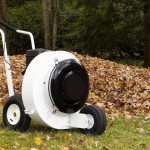As winter retreats and spring peeks around the corner, nature stirs from its slumber, eager to paint the world anew. Amidst this rebirth, gardeners are presented with a blank canvas, an opportunity to orchestrate their symphony of blossoms. Our comprehensive guide unveils the art and science of preparing your flower beds for spring, offering you a roadmap to transform your garden into a vibrant tableau of life and color.
Understanding Spring Flower Beds
The Importance of Spring Flower Preparation
An adequately prepared flower bed promotes robust growth and creates an environment conducive to flowers blooming in their full grandeur. Properly prepared soil, aptly selected seeds and bulbs, and carefully scheduled planting form the trifecta of an enchanting flower display.
The Impact of Climate on Flower Growth
Climate, arguably the invisible hand that guides all gardeners, plays a paramount role in flower growth. The temperature, amount of sunlight, and local rainfall patterns directly affect the types of flowers that can flourish in a particular region. Understanding the quirks of your local climate can help avoid untimely frosts or droughts and inspire a selection of flowers that thrive in your specific conditions.
Basic Steps to Prepare Your Flower Bed
Preparing your flower bed involves a sequential process of garden tasks. Each task carried out thoughtfully, sets the foundation for a flourishing flower bed, ready to greet the season.
Clearing the Flower Bed
Removing Dead Plants
The remains of the previous season’s bloom must be carefully cleared from the flower bed. This includes removing all the dead foliage, spent flowers, and weeds that may have sprouted. This cleanup process creates a clean slate for new growth and helps prevent the spread of diseases.
Pruning and Trimming
The second step entails the pruning and trimming of any perennials or shrubs in your flower bed. Cutting back last year’s growth allows the plant to direct its energy towards producing new growth, promoting a fuller, healthier plant.
Revitalizing the Soil
Soil Testing
After a long winter, soil testing is necessary. It reveals vital information about the soil’s pH and nutrient levels, enabling gardeners to make informed decisions about the amendments needed to create an ideal environment for plant growth.
Adding Compost and Organic Matter
The secret to a fertile flower bed lies in its soil. By adding compost and other organic matter, you not only enrich the soil with vital nutrients but also improve its texture and structure. This enhances the soil’s water retention capacity, providing a steady supply of moisture and nutrients to the roots of your flowers.
Soil Aeration
Compaction often results from winter’s harsh conditions, impeding the movement of water, nutrients, and air within the soil. Aeration alleviates this issue by turning and loosening the soil, providing an optimum environment for root development.
Planning Your Spring Flower Bed
Choosing the Right Flowers
The choice of flowers is not merely a question of personal preference but also involves considering the plant’s hardiness zones, sunlight and soil requirements, and growth habits.
Each plant brings a unique personality, and selecting the right ones can create a harmonious blend of colors, fragrances, and textures in your garden.
The Art of Color Coordinating
Color coordination can turn your flower bed into a visual treat. Whether you opt for a monochromatic scheme or a vibrant mix, carefully planning your flower colors can create a visual rhythm that enhances your garden’s aesthetic appeal.
Planting Your Spring Flowers
Planting your flowers correctly is crucial to their survival and blooming. Each flower has specific planting needs, including the right depth and spacing. By adhering to these requirements, you ensure that your plants have adequate room to grow and thrive.
Proper Mulching Techniques
Choosing the Right Mulch
While primarily used to retain moisture and suppress weeds, mulch can also contribute to your flower bed’s look and feel. From organic mulches like shredded bark and compost to inorganic ones like pebbles and landscape fabric, the type of mulch chosen can significantly affect your garden’s overall aesthetics.
Applying Mulch
Applying mulch around your flowers is a delicate process. The goal is to create a blanket that conserves moisture, moderates soil temperature, and deters weed growth without suffocating your plants. A 2-3 inches layer is usually adequate to serve these purposes.
Watering Your Flower Bed
The watering needs of a flower bed are nuanced and depend on the type of flowers, soil, and prevailing weather conditions. Providing a steady water supply without overwatering is a delicate balance that can significantly influence your flowers’ health.
Pest and Disease Control
A thriving flower bed is often a target for pests and diseases. Keeping a vigilant eye for early signs of infestation and employing suitable control measures can ensure your flowers remain healthy and vibrant.
Regular Maintenance of the Flower Bed
Maintaining a flower bed goes beyond the initial setup. Regular tasks like deadheading spent blooms, supporting taller plants, and keeping the area free of weeds are just as important in keeping your flower bed thriving throughout the spring.
Preparing a flower bed for spring is a process of nurturing life, and it requires effort, patience, and a deep understanding of nature’s rhythms. But the result—a garden bursting with color and vibrancy—is a reward, an affirmation of life and growth, a testament to the enduring beauty of nature.






